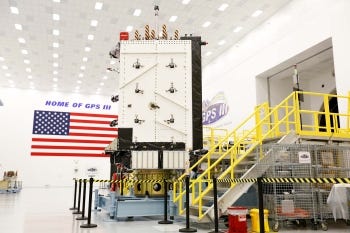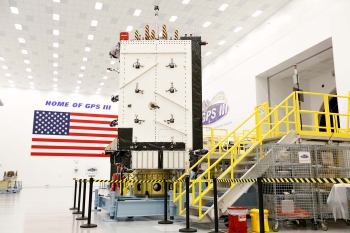Opinion
The chasm between trials and adoption
By Ashu Pande
The resiliency section on the U.S. government GPS.gov site draws attention to the part of the U.S. Space-Based PNT Policy which states: “The widespread and growing dependence on GPS by military, civil, and commercial applications, systems, and infrastructure make the performance of many of these systems inherently vulnerable if disruption or manipulation of GPS signals were to occur. GPS users must plan for potential signal loss and take reasonable steps to verify or authenticate the integrity of the received GPS data and ranging signal, especially in applications where even small degradations can result in loss of life.”
There is no doubt that GPS or rather GNSS resiliency is now a requirement. Over the past few years, there have been trials and testbeds set up to demonstrate alternate Positioning, Navigation and Timing (PNT) technologies that hold the potential to bring resiliency and deliver an Assured Positioning Navigation and Timing (APNT) system. Various technologies met and even surpassed the benchmark set in these trials.

In a January 2021 report, the U.S. Transportation Department, in their Conclusion and Recommendation section, (p. 194) wrote: “The demonstration indicates that there are suitable, mature, and commercially available technologies to backup or complement the timing services provided by GPS. However, the demonstration also indicates that none of the systems can universally backup the positioning and navigations capabilities provided by GPS and its augmentations.”
It has been 3 years since Executive Order 13905 was issued and over 2 years since the USDOT report was published yet there is sparse adoption of resilient positioning and navigation products. Once distilled, there are two high-level challenges plaguing adoption: commercial availability of products and a financial model to build and manage the infrastructure.
Commercial product availability of Positioning and Navigation systems
Universal Time is the same, irrespective of the client. Once resilient time has been computed, the computed time can be broadcast and served to thousands if not hundreds of thousands of clients per server.
The space for alternate timing is now maturing and commercially available. Solutions supporting Precise Time Protocol (PTP) and Network Time Protocol (NTP) methods are becoming readily available. PTP is moving towards becoming the standard for network timing. Open Compute Project has collaborating vendors further the solutions. These are now being adopted to provide time resiliency in critical systems. The maturity of this space is evident with vendors offering precise, global, secure, GNSS Jamming resistant Time As A Service.
Positioning and Navigation products have different use profiles. Each end user’s position and navigation profile are unique. One requires a Positioning and Navigation function in an end device due to the dynamic nature of the device. This mobility and the associated positioning need could be grouped as local area, campus area, regional, national, and global. Unlike Timing, Positioning and Navigation cannot be universally broadcasted and coupled with diverse requirements of clients, from position accuracy (sub-centimeter to 10’s of a meter) to availability (outdoor vs indoor). Today there is no globally available alternate positioning and navigation technology. Some providers are using Low Earth Orbit communication satellites to provide positioning. These have their challenges and topic for another paper. Low-Earth orbit positioning satellites hold promise as a globally available technology but there is sparse information and test data available on these systems.
To enable resiliency these different positioning and navigation approaches have to be adopted in the positioning client. This necessitates a change to the existing positioning subsystem on the user equipment and hence a delay in time to market.
The US DOT report stated: “The critical infrastructure positioning and navigation requirements are so varied that function, application, and end-user specific positioning and navigation solutions are needed. This necessitates a diverse universe of positioning and navigation technologies.”
Depending on the alternate positioning and navigation technology being adopted and the
solution being developed, the change on the device side could be as simple as capturing a signal of opportunity from existing radio systems on the device, to the addition of a few gates into the positioning ASIC, to the development of a completely new radio receiver to demodulate the ranging signal or the integration of new sensor hardware. All of these are changes that are device specific and require custom development, integration, testing, and deployment of the product.
Financial model to build and manage the infrastructure
Some of the alternate Position and Navigation solutions require the deployment of new
terrestrial or space infrastructure. Some solutions are deploying regional or national networks while others are looking to piggyback on an existing global network for initial adoption. These solutions have proven well in a test environment but require extensive investment to build out the network. The CAPEX of deploying and the OPEX in managing infrastructure at a global, national, or even a regional network is high. Investment to deploy alternate position and navigation networks can be in the hundreds of millions of USD and the ROI is not clear unless funded by taxpayer dollars, as is the case with GPS.
GPS/GNSS is global and universally adopted positioning and navigation technology. This cannot be said for available alternate positioning and navigation technology. Some of the alternate Positioning and Navigation solutions are not based on using existing signals of opportunity but rather require the transmission of a signal. This transmission can be in a licensed or unlicensed band. As these companies move their product from a trial phase to a national phase or global level, they need to work with licensing agencies in individual countries. This is time-consuming and can also lead to a smorgasbord of various frequency bands and bandwidth adding further complexity to the transmitter and the positioning receiver design.
The requirements to make software and/or hardware changes to the user equipment, the need to identify free frequency bands and obtain a license in countries of interest as well the cost of rolling out an alternate positioning infrastructure are weighing down on the mass deployment and adoption of resilient Positioning and Navigation systems.
To achieve high scalablity and widespread adoption of an alternate PNT solution, either the
value it provides to the users must be extremely high, or the cost to change the user equipment must be extremely low, or both. This is the chasm that alternate position and navigation technology providers need to cross for mass market adoption.
Contact: Ashu Pande, dayadvisors@gmail.com.



























